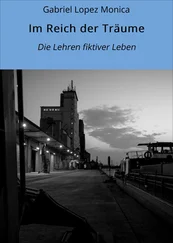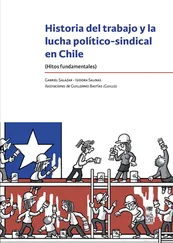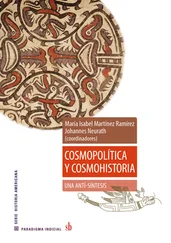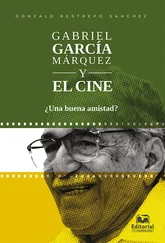Gabriel Josipovici - Touch
Здесь есть возможность читать онлайн «Gabriel Josipovici - Touch» весь текст электронной книги совершенно бесплатно (целиком полную версию без сокращений). В некоторых случаях можно слушать аудио, скачать через торрент в формате fb2 и присутствует краткое содержание. Год выпуска: 1996, ISBN: 1996, Издательство: Yale University Press, Жанр: Современная проза, на английском языке. Описание произведения, (предисловие) а так же отзывы посетителей доступны на портале библиотеки ЛибКат.
- Название:Touch
- Автор:
- Издательство:Yale University Press
- Жанр:
- Год:1996
- ISBN:0300066902
- Рейтинг книги:5 / 5. Голосов: 1
-
Избранное:Добавить в избранное
- Отзывы:
-
Ваша оценка:
- 100
- 1
- 2
- 3
- 4
- 5
Touch: краткое содержание, описание и аннотация
Предлагаем к чтению аннотацию, описание, краткое содержание или предисловие (зависит от того, что написал сам автор книги «Touch»). Если вы не нашли необходимую информацию о книге — напишите в комментариях, мы постараемся отыскать её.
Touch — читать онлайн бесплатно полную книгу (весь текст) целиком
Ниже представлен текст книги, разбитый по страницам. Система сохранения места последней прочитанной страницы, позволяет с удобством читать онлайн бесплатно книгу «Touch», без необходимости каждый раз заново искать на чём Вы остановились. Поставьте закладку, и сможете в любой момент перейти на страницу, на которой закончили чтение.
Интервал:
Закладка:
At the shrine of St Peter, what Brown calls ‘a whole ritual of access’ was played out, for, in the words of Gregory of Tours which Brown cites: ‘Whoever wishes to pray here must unlock the gates which encircle the spot, pass to where he is above the grave, and, opening a little window, push his head through and there make the supplication that he needs.’ There were little golden keys with which to open the gates, and these were of course treasured by those who made the pilgrimage to Rome as much as the brandea which, as Brown explains, were ‘heavy with the blessing of Saint Peter’.
Of course this ritualisation of the tension between proximity and distance sometimes broke down, but the occurrences of such instances only brings out more clearly the underlying principle of the therapy of distance. Brown describes, for instance, how a Carthaginian noblewoman, Megetia, ‘committed herself to the “therapy of distance” by travelling away from her family to the shrine of Saint Stephen in nearby Uzalis’. But, once there, matters took a course of their own. Her early biographer describes how,
while she prayed at the place of the holy relic shrine, she beat against it, not only with the longings of her heart, but with her whole body so that the little grille in front of the relic opened at the impact; and she, taking the Kingdom of Heaven by storm, pushed her head inside and laid it on the holy relics resting there, drenching them with her tears.
And Brown concludes: ‘The carefully sustained tension between distance and proximity ensured one thing: praesentia , the physical presence of the holy … was the greatest blessing that a late-antique Christian could enjoy.’ Morinis' detailed examination of what goes on in three West Bengali shrines to this day would suggest that it was central not only to the life of late-antique Christians.
The therapy of distance induced by pilgrimage was a double one. The pilgrim set out, left the safety of the known and the familiar, and engaged in what Victor Turner has called a ‘liminal’ or ‘liminoid’ experience, a rite of passage. But this was not so much a passage from A to B as a journey into the experience of distance itself. When the pilgrim touched the shrine at the end of his or her long journey it was in an attempt not so much to bridge the distance that separated him or her from the holy as an instinctive way of making that distance palpable. There was no need for more, no need to clasp or grasp, no need to try and make the saint one's own or to try and prise the ‘virtue’ out of him. (That, at least, was the theory. In practice, as we see with Megetia, we human beings always want more.) When Thomas sought to thrust his hand into Christ's wounds it was to lay a doubt to rest; when the woman touched Jesus' garments it was to cure her ailment by contact with the source of all health; but when the pilgrim travelled to the shrine of St Lawrence or St Thomas it was in the confidence that the act of pilgrimage itself would make the saint look kindly on him when he arrived. Having come all that way to ‘seek’ the saint he would feel that his presence in this place had brought the distance between them to life and this, dar  ana, praesentia , was enough.
ana, praesentia , was enough.
By the seventeenth century that confidence had evaporated and distance had become the enemy. Descartes is determined to get down to what can be known certainly by being known immediately , without mediation. Berkeley, in a horrifying image, wants reality (or God, since to him God is reality-as-we-perceive-it) to be as near as pain : ‘A man born blind’, he writes, ‘being made to see, would, at first, have no idea of distance by sight. … The objects intermitted by sights would seem to him (as in truth they are) no other than a new set of thoughts or sensations, each whereof is as near to him as the perceptions of pain or pleasure, or the inward passions of the soul.’
We are all heirs of the seventeenth century. We all still talk quite naturally of getting down to the truth, of clearing away the clouds of confusion, as if the truth lay buried beneath obfuscating material which only needed to be removed in order for it to shine forth. But it may be that the assumptions which led to the development of the medieval practice of pilgrimage, which informs Hindu pilgrimage to this day, are not simply cultural and not simply to be washed away by changes in philosophical and popular attitudes. It may be that they are more deeply rooted in the body's relation to the world than we care to acknowledge and that the Middle Ages and Hindu culture have merely been more receptive to our basic needs. For if the goal of pilgrimage was, and is, to make distance palpable, is that not still an instinct with us today? Is it not what we have found Coleridge discovering in his lime-tree bower? Is not the secular visitor to Rome or Los Angeles, who touches the age-old stones or the ocean, instinctively repeating that ancient gesture and, by so doing, not so much bridging the distance between himself and these repositories of power as acknowledging their otherness and the awe he feels in their presence?
But how can that be? For the medieval pilgrim the power emanated from the saint. If we no longer believe in saints do we simply transfer that power to stone monuments or to natural phenomena like the Pacific Ocean or Victoria Falls? That is clearly not quite right. Neither I in Los Angeles nor my friend in Rome was suddenly overcome by some form of animism. I think the awe we both felt — and felt we needed to acknowledge by the act of touching — had to do rather with the unimaginable size and ancientness of the ocean, the sheer length of time through which those stones had stood in Rome. By touching, I think, we experience a sense of our own implication in a history longer and broader than our personal one: I am — and it is — and touch can somehow affirm that truth. This, I think, is the implication of that act of touch.
As it happens, Proust can help us once again. At the end of his great essay on reading, which he wrote as an introduction to his translation of Ruskin's Sesame and Lilies , he arrives at a contemplation of the very mystery I have been exploring. He has been talking about the fact that it is as much in the silence between words as in the words themselves that we find what moves us in the ancient books we love. In particular he has been pondering why it is he is moved by the colons which divide the periods in the Gospels almost more than he is moved by the actual content of those periods, and it is the image of the two dots, I suspect, which leads him on to his conclusion. The classics, he says, move us not only because they have profound things to say and say them in moving and beautiful language, but because they bring into the present — our reading time — a portion of the past. ‘How many times’, he says,
in The Divine Comedy , in Shakespeare, have I known that impression of having before me, inserted into the present actual hour, a little of the past, that dreamlike impression which one experiences in Venice on the Piazzetta, before its two columns of gray and pink granite, that support on their Greek capitals, one the Lion of Saint Mark, the other Saint Theodore trampling the crocodile under his feet — beautiful strangers come from the Orient over the sea at which they gaze in the distance and which comes to die at their feet, and who both, without understanding the conversations going on around them in a language which is not of their country, on this public square where their heedless smile still shines, keep on prolonging in our midst their days of the twelfth century, which they interpose in our today [elles continuent à attarder leurs jours du xiie siècle dans la foule d'aujourd'hui, sur cette place publique où brille encore distraitement, tout près, leur sourire lointain].
Читать дальшеИнтервал:
Закладка:
Похожие книги на «Touch»
Представляем Вашему вниманию похожие книги на «Touch» списком для выбора. Мы отобрали схожую по названию и смыслу литературу в надежде предоставить читателям больше вариантов отыскать новые, интересные, ещё непрочитанные произведения.
Обсуждение, отзывы о книге «Touch» и просто собственные мнения читателей. Оставьте ваши комментарии, напишите, что Вы думаете о произведении, его смысле или главных героях. Укажите что конкретно понравилось, а что нет, и почему Вы так считаете.












